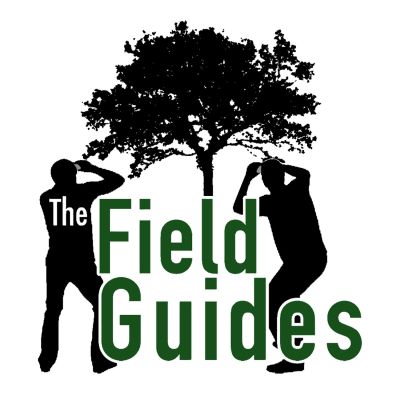Nature nerds rejoice! The Field Guides is a monthly podcast that will bring you out on the trail, focusing on the science of our North American wildlife.
http://www.thefieldguidespodcast.com/new-blog/
Ep. 51 - Flickers Fooling Around: Sex Roles in a North American Woodpecker
The northern flicker (Colaptes auratus) is a common bird that has some exceptionally uncommon behaviors. Unlike most bird species, male flickers take an equal share of egg incubation and feeding, and, in up to five percent of females, a lady flicker will take up with two mates - an older male and a younger male - raising young in two different nests at the same time. In addition, flickers will sometimes lay their eggs in the nests of other flickers, a behavior called intraspecific brood parasitism, another habit rarely seen in birds. Join the guys as they delve into studies exploring the wild and swinging world of northern flicker reproduction.
This episode was recorded on May 11th, 2021 at Chestnut Ridge Park in Orchard Park, NY.
Episode Notes:
Bill fully realizes that he mispronounced monogamous as monogyoumous. He doesn’t know why he did this, but he is appropriately embarrassed about it.
Bill and Steve were both amazed to learn that belted kingfishers nest in burrows. Find out more here.
At one point in this episode, Bill wondered about all cavity nesting birds having pure white eggs. They do not, and this article provides a nice overview of egg coloration in cavity-nesting species.
Around the 32:40 mark – Bill said that of the bird species that have biparental care, 90% have extra pair paternity (EPP), and, in describing it, he said that it occurs when a female mates with another male outside her pair bond, but, to be clear, both sexes can engage in EPP.
Steve asked about their longevity. Some info from one of Dr. Wiebe’s studies: Flickers have a relatively fast life history with an annual apparent mortality rates of 60%. The rate doesn’t vary with age. A 2006 study looked at mortality rates of male and female flickers over a 6-yr period and observed only 1-2 birds out of every 300 adults were 7 or more years old. There was no significant differences between male and female survival rates for the general population. The oldest known flicker was 9 years, 2 months old.
The New World blackbird family is Icteridae.
Why are these birds called flickers? As best as we can tell from a quick google search, the name is another effort to mimic their call - flicka flicka flicka.
Useful Links
Gumleaf Boots, USA (free shipping for patrons)
Thank you to Always Wandering Art (Website and Etsy Shop) for providing the artwork for many of our previous episodes!
Support us on Patreon!
Works Cited
Wiebe, K.L., 2002. First reported case of classical polyandry in a North American woodpecker, the northern flicker. The Wilson Journal of Ornithology, 114(3), pp.401-403.
Wiebe, K.L., 2018. Age-related improvements in fecundity are driven by the male in a bird with partially reversed sex roles in parental care. Oecologia, 188(4), pp.1095-1104.
Wiebe, K.L. and Kempenaers, B., 2009. The social and genetic mating system in flickers linked to partially reversed sex roles. Behavioral Ecology, 20(2), pp.453-458.
Image credit
Yellow-shafted northern flicker (female) (Colaptes auratus), Cabin Lake viewing blinds, Deschutes National Forest, near Fort Rock, Oregon
Permission details: Nature's Pic's (www.naturespicsonline.com) explicitly releases for copying under Attribution-ShareALike 3.0 (see copyright release webpage: http://www.naturespicsonline.com/intro.html).
